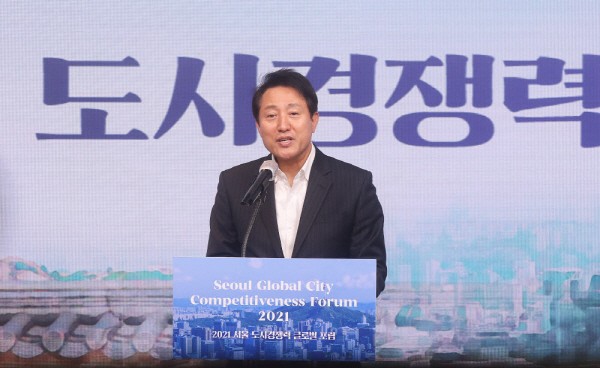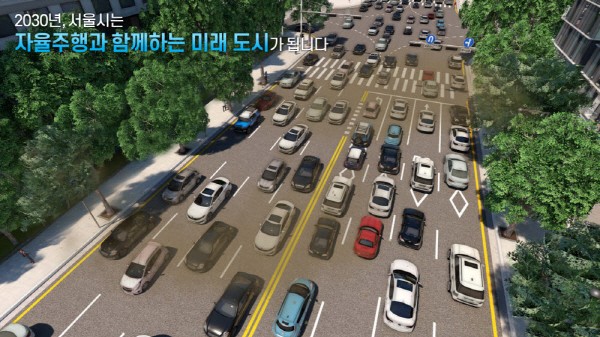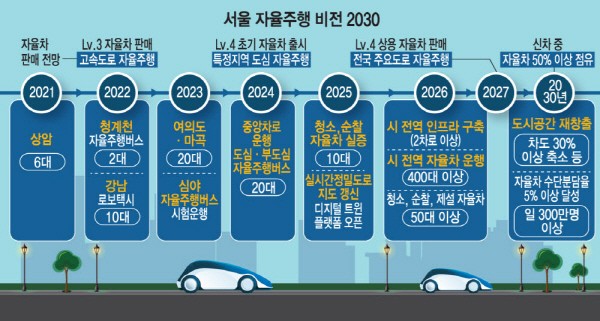Seoul Mayor Se-hoon Oh Announced Vision 2030
Forming infrastructure with 148.7 billion KRW by 2026
Starting with Sangam at the end of this month... Expansion of bases such as Gangnam
Establishment of

The Seoul Metropolitan Government will invest 148.7 billion KRW by 2026 to build autonomous driving infrastructure on all roads with two or more lanes in the city. Starting with Sangam at the end of this month, Gangnam (2022), Yeouido (2023), and Magok (2024) will be designated as autonomous driving pilot districts, and autonomous vehicle bases will be expanded.
Seoul Mayor Se-hoon Oh announced the 'Seoul Autonomous Driving Vision 2030' on the 24th, and also presented a vision to improve the city's competitiveness by leaping to become a 'Top 5 autonomous driving city' by 2026 and raising it to the top 3 in the world by 2030.
'Vision 2030' is a basic plan for autonomous driving to achieve the 'smart transportation city' presented in 'Seoul Vision 2030' earlier, and it is the first project from a local government related to autonomous driving. There are 5 main sectors in this plan. △Expansion of autonomous vehicle pilot operation district and commercialization of mobility services △Operation of Cheonggyecheon autonomous driving bus △Establishment of autonomous driving bus as a means of public transportation △Introduction of autonomous vehicle-based city management into public service sector △Establishment of autonomous driving infrastructure throughout Seoul

From the end of November in Sangam, Mapo-gu, designated as the first autonomous driving pilot district, the Seoul Metropolitan Government will operate six self-driving cars with demand-response type that call for vehicles with smartphones. In the Sangam area alone, they plan to operate 50 or more autonomous vehicles by 2026. At the beginning of next year, the Gangnam area will be designated as a pilot zone for autonomous vehicles, and more than 10 robo-taxi (unmanned self-driving taxis) will be introduced in the private sector. Next, by 2026, the number of self-driving buses and robo-taxi circulating in Gangnam will be increased to more than 100. In addition, from April next year, an autonomous driving bus for urban circulation will be operated in Cheonggyecheon, a downtown attraction visited by 40 million people annually.
It will operate as a mobile service that connects Gyeongbokgung Palace, Changgyeonggung Palace, Gwangjang Market, and Dongdaemun, while providing various opportunities to experience self-driving cars as a means of tourism. By 2023, the self-driving bus (Hongdae-Jonggak-Heunginjimun) will start trial operation, and the goal is to establish the autonomous bus as a means of public transportation by 2026.

The city of Seoul established a new line connecting Hongdae-Sinchon-Jonggak-Heunginjimun (9.7km), which has a lot of traffic during late-night hours, so that the central lane will be used during that hours. By 2024, they plan to additionally operate long-distance late-night self-driving bus routes that connect downtown and sub-city, such as △ Yeouido – city center- Dobong (24.6 km) △Susaek – city center – Sangbong (23.8 km) and △ Gupabal – city center- Gangnam (24.6 km).
From 2024, the city of Seoul will introduce autonomous vehicles to city management public services such as patrol, cleaning, and snow removal. Prior to the sale of commercial autonomous vehicles (level 4) in 2027, autonomous driving infrastructure will be built on all roads with two or more lanes (4291 locations, total length of 8,240 km) by 2026. Mayor Oh said, “We will expand the autonomous driving infrastructure throughout Seoul and make Seoul a top 5 autonomous driving city by 2026. By 2030, Seoul will become a city of the future with autonomous driving.”
By Staff Reporters Hye-mi Kwon (hyeming@etnews.com), Ho Choi (snoop@etnews.com)